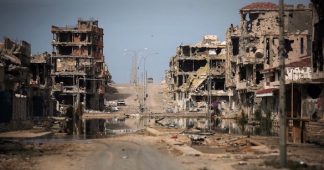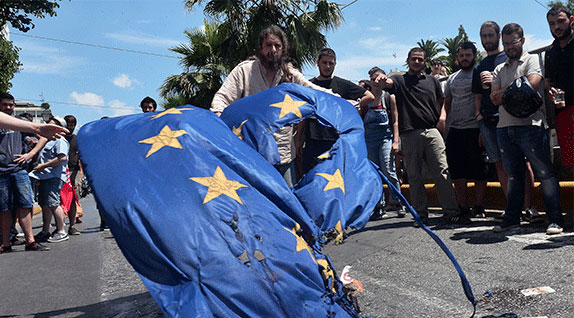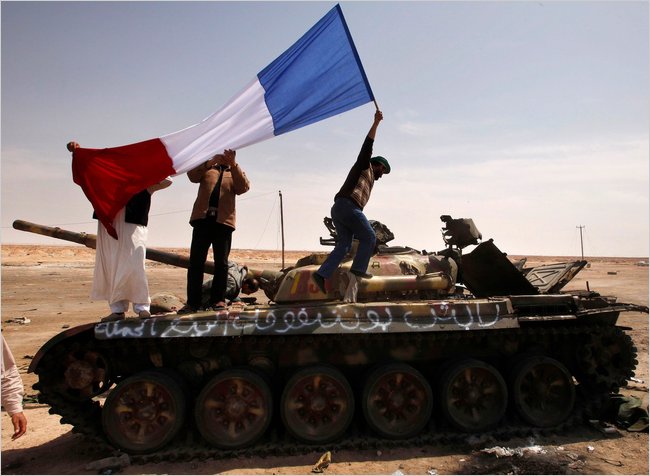By: Pablo Jofre Leal / Source: HispanTV / The Dawn News / May 30, 2016
Like a tragic never-ending story, once again, the Mediterranean sea —in this case, near the Libyan coast— has become a cemetery for men and women and even for children.
They are seeking for a place to live humanely and so they throw themselves in precarious boats in order to reach a continent that refuses to accept its responsibility for what’s happening to them, in the greatest migratory wave since War World II. Human beings come from the Sub Saharan Africa, from the Maghreb, from Sahel, Oriental Africa, but also from Eritrea and Syria. This proves that wars and the chronic economic underdevelopment of Africa are the causes that encourage the displacement of millions of human beings, who from the impoverished and war-torn southern shore of the Mediterranean look at the lights of a distant and opulent Europe
Death sets sail from the Libyan Ports
On May 25 and 26, two shipwrecks put Libya in the spotlight once again. These tragedies keep adding victims to the long list. In this case 50 people died and a third shipwreck, last May 27, increments the number —as informed by the Office of the United Nations High Commissioner for Refugees— to around 700 victims. According to the International Organisation for Migration (IOM) the people rescued from the Mediterranean water close to Libya since May 23 to May 27 add up to 14 thousand. So far this year, approximately, 195 thousand immigrants have arrived by sea to Europe, of which 40 thousand have arrived to Italy. Of this total, 2,000 lives were lost. Most of the migrants whose boats crashed in front of the Libyan coast were from Eritrea, Somalia,
Syria, Mali, Senegal, Sierra Leone, Ivory Coast, Ethiopia, Libya. Overcrowded with desperate people, these crafts, instead of being the way to a better life, seem to be path towards death.
Since 2011 to this date, Libya has been the center of a great part of the shipwrecks in the Mediterranean Sea. This was simultaneous to the invasion of that country, that ended with the the execution of Muammar Al-Qadhafi, in October 2011, and the end of the Jamahiriya government, destroying one of the most stable and prosperous States of Africa. Libya had been able to use the hydrocarbon wealth of its country to promote social programs, allowing more than 7 million Libyans to enjoy one of the best human development figures with the lowest mortality rate for children and the highest life expectancy in Africa. High health standards, free education, an economic system that allowed to finance the living expenses of the Libyan society, as well as attracting hundreds of thousands of immigrants who could find a job on Libyan territory and who had been denied their rights in their countries of origin.
Undoubtedly, the Libyan government didn’t comply with the standards of the so-called “representative democracies”, but the irony is that this did not prevent Al-Qadhafi, especially in the last decade before his overthrowing, from being able to develop strong political and economic links with the governments of the same countries that planned and executed his deposition and established the role of Libya as a State that could stop the migrant flux from Africa to Europe. So, Muammar Al-Qadhafi established close relations with the Prime Minister Silvio Berlusconi from Italy, José María Aznar, from Spain, with former French President Nicolás Sarkozy and the former British Prime Minister, Tony Blair. He cooperated with the Spanish and British secret intelligence services to dismantle commands from both ETA (acronym for Euskadi Ta Askatasuna) and the Irish Republican Army (IRA). He fulfilled the international expectations to lift the sanctions established after the attack against the PanAm aircraft over the sky of the Scottish city Lockerbie in 1988.
The North Atlantic Treaty Organisation (NATO) attacks, orchestrated by Washington under pretext of democratization of the country —the same country they had excellent relations with, before Libya decided to seek different paths in economy and expand its business partners— destroyed the North African country, turning it into a weapon reservoir and the greatest center of weapon trafficking. They divided the country into different areas controlled by different political groups —ones, closer to the West, the others, allies of Takfiri groups led by an unconditional ally to the U.S., Abdelhakim Belhadj. In a country that counts with two executives powers which are in constant confrontation, apart from a UN government created in the NATO offices and from which is expected by the North Atlantic alliance the excuse of an authorization in order to re-invade the country, now, under the pretext of combating terrorist gangs linked to Salafism.
The scenario I described a year ago in Libya hasn’t changed much: it still is “a divided territory, which became a hunting ground of groups and transnational corporations that, supported by the various warring factions, depleted natural resources. Specifically, those who fought against Gaddafi and served the interests of the most important actors based on military, regional, tribal and religious criteria, which have become intensified and have made irreconcilable any thoughts on a unitary state.
In this scenario of confrontation, the European Union has declared it wants to promote a political and military intervention to establish a government of National Unity. The reason for this lies is the strategic location of Libya in the Mediterranean scenario and the role it played in the last years of the Gaddafi regime: to work as an effective containment of the waves of African immigrants, who are seeking for the Mediterranean welfare that they have been denied in their own countries. To that add the fabulous oil and gas contracts that were signed with European companies”.
In this context, after Muammar Al-Gaddafi’s death, a slow but sure process began, to turn Libya into the biggest center for the departure of inmigrants from the African Continent, whose main destiny is Europe. A process that was under Al-Gaddafi’s control, thanks to the agreements made with the EU, for example with Italy, which supplied, apart from the oil and gas purchases, naval units to patrol, diplomatic and political support, and access to the EU circle of governments. All this was shattered. It is estimated today that 800,000 people are on the Libyan coast trying to take a leap off the shore of the former Mare Nostrum, to embark on their way to Europe, paying mafias to take them into the new world, which year after year pocket nearly 4 billion dollars with this kind of trafficking.











